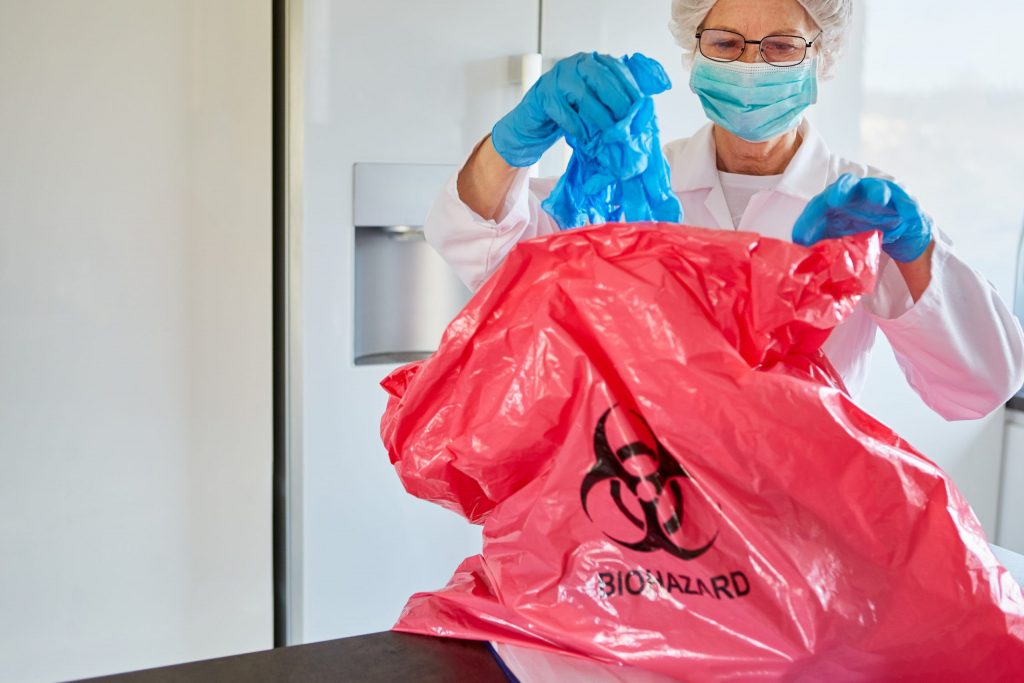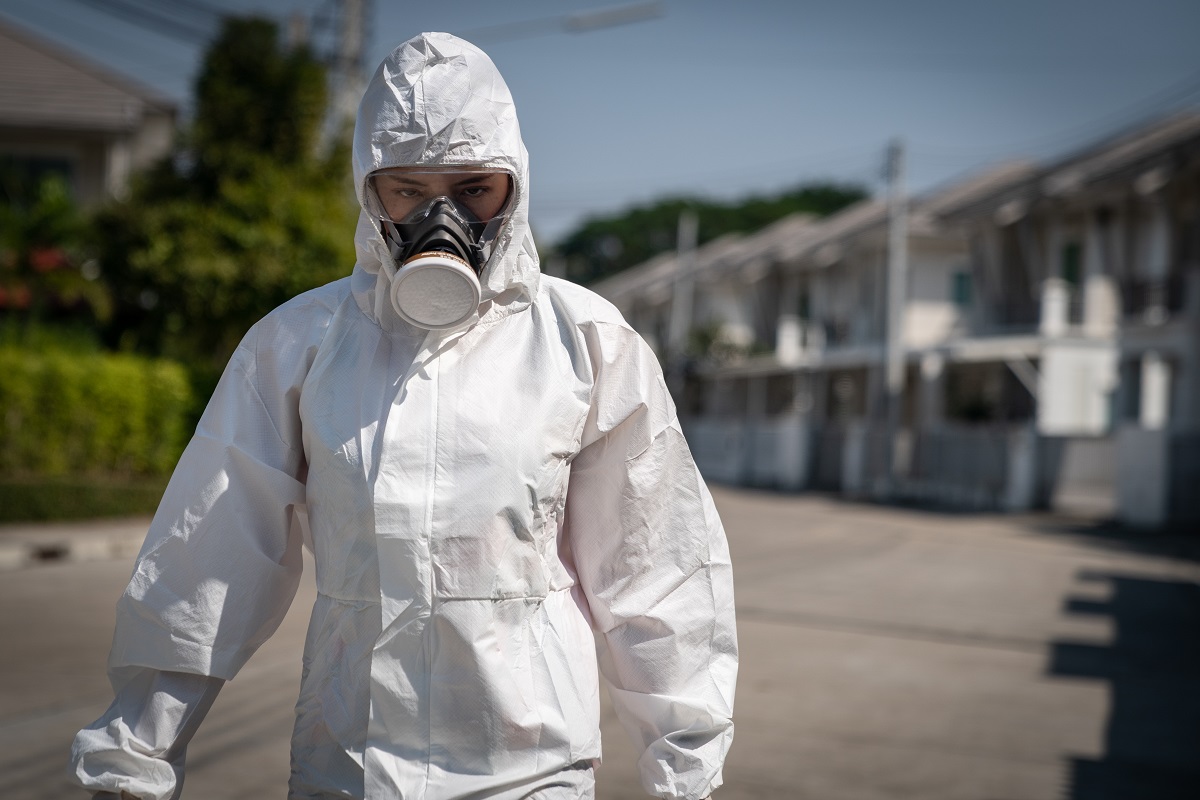Mold Remediation Solutions: Protecting Your Building from Mold Damage
Wiki Article
Expert Biohazard Cleaning and Purification for Blood, Bodily Fluids, and Hazardous Products
The prospective health and wellness threats linked with direct exposure to biohazards emphasize the essential demand for precise handling and complete cleaning. As we browse the elaborate landscape of biohazard clean-up, understanding the nuances of guidelines, conformity, and the specialized devices at play comes to be critical in guaranteeing a risk-free and thorough decontamination process.
Health Dangers of Biohazard Direct Exposure
Exposure to biohazards positions considerable health risks that can cause extreme effects for neighborhoods and people alike. Biohazards incorporate a large range of organic substances, including blood, physical fluids, mold and mildew, germs, infections, and other potentially infectious products. When individuals enter into contact with these biohazards, whether via accidents, improper handling, or ecological direct exposure, they face the threat of contracting serious diseases or illness.One of the key wellness risks related to biohazard exposure is the transmission of contagious diseases. Bloodborne pathogens such as HIV, liver disease B and C, and various bacteria can be existing in biohazardous products, presenting a direct hazard to human wellness. Breathing in airborne biohazards like mold spores or entering contact with contaminated surfaces can additionally lead to respiratory issues, allergies, and other negative health and wellness impacts.
Moreover, biohazard direct exposure can have long-lasting health and wellness implications, with some diseases manifesting years after the first get in touch with (Blood Cleanup). Therefore, it is important to prioritize proper biohazard cleaning and decontamination to minimize these wellness risks and make certain the safety and security of communities and people

Specialized Educating for Biohazard Cleaning
When it concerns dealing with biohazard cleaning effectively and securely, specialized training plays a basic role in guaranteeing appropriate purification procedures are complied with. Biohazard cleanup needs particular understanding and abilities to successfully alleviate threats connected with bloodborne virus, physical liquids, and dangerous materials. Professionals learnt biohazard cleaning undergo strenuous instruction on how to safely take care of, remove, and get rid of biohazardous products to avoid contamination and direct exposure.Specialized training for biohazard clean-up covers a range of crucial topics, including correct individual safety devices (PPE) use, bloodborne pathogen awareness, decontamination strategies, and harmful waste disposal methods. People trained in biohazard cleaning are outfitted with the required expertise to analyze contamination degrees, recognize possible threats, and implement suitable cleanup treatments in compliance with regulative standards.
Continuous training and education and learning are critical in the field of biohazard cleanup to remain updated on the newest decontamination modern technologies, safety and security procedures, and policies. By purchasing specialized training, biohazard cleaning specialists can properly react to emergency situation clean-up circumstances and safeguard both public wellness and the environment.
Relevance of Correct Decontamination Techniques
Utilizing correct purification methods is important in biohazard clean-up to properly reduce and remove dangerous materials wellness dangers. Efficient decontamination not only makes certain the elimination of visible traces of blood, physical liquids, and other biohazards but also targets invisible microorganisms that may present major wellness dangers crime scene cleanup cost otherwise correctly eradicated. By adhering to rigid decontamination protocols, educated experts can considerably minimize the danger of exposure to hazardous bacteria, viruses, and bacteria that could bring about illness or infections.Appropriate purification strategies involve making use of customized tools and anti-bacterials that are particularly created to reduce the effects of biohazards effectively. Complete cleaning and disinfection of infected locations are important to protect against the spread of microorganisms and make certain a secure atmosphere for passengers. In addition, the correct disposal of biohazardous waste following purification treatments is important in avoiding contamination of other surface areas or individuals.

Devices and Tools for Safe Cleaning
The appropriate tools and tools play a critical function in making certain the efficient and secure clean-up of biohazardous materials. When handling blood, bodily fluids, or harmful materials, biohazard cleansing specialists depend on specialized gear to minimize exposure threats and extensively decontaminate the afflicted location. Individual safety equipment (PPE) such as handwear covers, coveralls, safety glasses, and masks are important to safeguard versus straight contact with web potentially contagious materials. Furthermore, biohazard cleaning sets consisting of disinfectants, absorbent products, and biohazard bags are utilized to securely contain and dispose of contaminated items. Blood Cleanup.Advanced cleansing tools like hospital-grade anti-bacterials, HEPA-filtered vacuum cleaners, and fogging equipments are used to sanitize surface areas and eliminate biohazards successfully. Specialized tools such as sharps containers and biohazard garbage disposal containers are used to securely handle sharp items and biohazardous waste materials. By using the ideal tools and devices, biohazard cleansing specialists can make certain a complete cleanup procedure that focuses on safety and security and reduces health and wellness dangers for both workers and residents of the afflicted area.
Regulations and Compliance in Biohazard Cleansing
Appropriate adherence to policies and conformity criteria is extremely important in biohazard cleansing to make sure the safety and security of both personnel and the environment. Federal government agencies such as OSHA (Occupational Safety and Wellness Administration) and the EPA (Epa) have developed particular guidelines for biohazard clean-up treatments to decrease wellness threats and environmental contamination. These regulations cover a variety of facets including the handling, transport, and disposal of biohazardous products, along with the required training and safety equipment required for employees associated with the clean-up process.Biohazard cleansing business need to stay updated with these guidelines to guarantee that their operations fulfill the needed safety standards. Failure to follow these guidelines can lead to severe effects, including fines, lawsuit, and jeopardizing the health and wellness of people and the atmosphere. By following rigid laws and compliance procedures, biohazard cleaning companies can successfully alleviate threats and make sure a thorough and risk-free cleaning procedure for all parties entailed.
Verdict
In final thought, biohazard cleansing and decontamination call for specialized training, appropriate strategies, and adherence to laws. Exposure to blood, physical liquids, and dangerous materials presents significant wellness dangers, making it important to make use of the best equipment and devices for secure cleaning. By complying with stringent protocols and standards, experts can successfully minimize the risks related to biohazard exposure and guarantee the safety and security of both themselves and others.
As we navigate the detailed landscape of biohazard see here now cleaning, understanding the nuances of laws, conformity, and the specific equipment at play becomes imperative in ensuring a detailed and safe purification process. (Blood Cleanup)
When it comes to dealing with biohazard cleanup successfully and safely, specialized training plays an essential duty in making certain appropriate decontamination procedures are complied with.Utilizing appropriate decontamination techniques is crucial in biohazard clean-up to effectively get rid of harmful materials and lessen wellness risks. Additionally, biohazard cleaning sets having disinfectants, absorptive materials, and biohazard bags are made use of to securely get rid of and have of infected items.
Federal government companies such as OSHA (Occupational Security and Wellness Management) and the EPA (Environmental Protection Company) have actually developed particular standards for biohazard cleaning procedures to lessen wellness threats and environmental contamination.
Report this wiki page